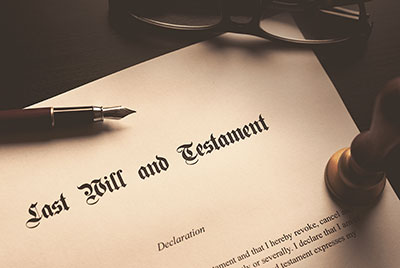 Since an individual retirement account (IRA) can often represent a large percentage of an individual’s assets, an essential question that many clients face is who to name as the beneficiary of their IRA accounts. There are a number of reasons why a client may wish to consider naming a trust as the beneficiary, rather than an outright distribution to an individual. This ensures that the assets in the account remain available and the account’s investment earnings continue to accumulate tax free while they are in the account. Nonetheless, careful attention must be taken to ensure that these assets receive the appropriate tax treatment and are protected from creditors, including future ex-spouses.
Since an individual retirement account (IRA) can often represent a large percentage of an individual’s assets, an essential question that many clients face is who to name as the beneficiary of their IRA accounts. There are a number of reasons why a client may wish to consider naming a trust as the beneficiary, rather than an outright distribution to an individual. This ensures that the assets in the account remain available and the account’s investment earnings continue to accumulate tax free while they are in the account. Nonetheless, careful attention must be taken to ensure that these assets receive the appropriate tax treatment and are protected from creditors, including future ex-spouses.
Married couples typically name the surviving spouse as the primary beneficiary of their IRA, which allows the surviving spouse to treat the IRA as his or her own (known as a spousal rollover). The same favorable tax treatment is not afforded when an IRA is left to a child, grandchild or other beneficiary under IRC §408(d)(3) since those beneficiaries must begin withdrawing the required minimum distribution (RMD) in the year following death based upon their own life expectancy. Any beneficiary who fails to withdraw the RMD may have to pay a penalty equal to 50 percent of the amount that should have been withdrawn.
However, practitioners should make clients aware that naming a trust as the beneficiary, rather than an individual person, may be a better option. There are two common reasons to do this. First, the intended beneficiary may be a minor, disabled, a spendthrift or need assistance managing the IRA. Second, the client may want to ensure that the assets are passed to specific beneficiaries.
While an IRA cannot be owned by a trust directly during an owner’s lifetime without subjecting the account to immediate taxation, the owner may name a trust as a beneficiary provided that certain requirements are met. The failure to closely follow specific IRS rules could result in an accelerated distribution of the IRA and a significant tax burden to the beneficiary. In order for a trust to be viable as a beneficiary, the trust must meet a four-part test:
- It must be a valid trust under state law;
- It must be irrevocable or become irrevocable upon the death of the owner;
- The beneficiaries of the trust must be identifiable from the trust instrument; and
- The IRA custodian must receive a copy of the trust by Oct. 31 of the year following the owner’s death.
Types of Trusts
If naming a trust fits into the client’s overall objective, there are generally two principal types of trusts that qualify as a beneficiary: conduit trusts and accumulation trusts.
- A conduit trust pays the designated trust beneficiary their annual RMD each year using the designated beneficiary’s life expectancy, and the beneficiary pays tax on such RMD at their own personal tax rates. The balance of the retirement account is safeguarded from the claims of the beneficiary’s creditors and remains in trust for the original account owner’s intended successor beneficiaries.
- An accumulation trust permits the trustee of the trust to determine whether to pay out the RMD to the trust beneficiaries or retain those funds in trust in order to protect/preserve the funds. The annual RMD is based upon the life expectancy of the oldest beneficiary of the trust. If the funds are ultimately retained in the trust, they will be taxable at trust tax rates (except for Roth IRAs where no tax is due on distributions). If, however, the trustee makes a distribution of income from the trust, then the beneficiary will pay tax on such income at their own personal tax rates.
Changes on the Horizon?
In late May, the House of Representatives overwhelmingly passed the Setting Every Community Up for Retirement Enhancement Act of 2019, which, if passed by the Senate and signed into law in its current form, would provide sweeping changes to retirement accounts. The SECURE Act contains many new provisions, including the complete elimination of the stretch IRA. Under the Act, all non-spousal beneficiaries, including trusts, would be required to withdraw any inherited IRA within a 10-year period. Although there would be exceptions to this general rule, including if the beneficiary is a minor, disabled or chronically ill, this fundamental change to distributions would have far-reaching effects to retirement accounts.
© 2020 New Jersey Society of Certified Public Accountants
{{cta(‘b05cee88-dbcc-43c2-af17-c5fc17122a75’)}}
